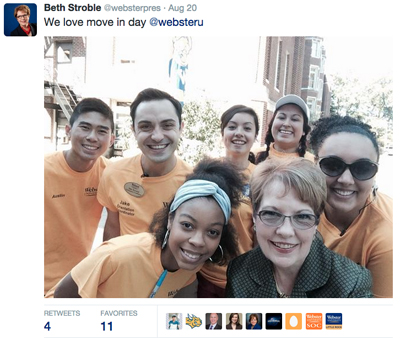Opportunities and Challenges for Higher Ed’s Tech Leaders
Title: The IT Leadership Workforce in Higher Education, 2024
Author: Mark McCormack
Source: EDUCAUSE
EDUCAUSE conducted a survey of over 400 IT professionals in roles ranging from director to chief information officer to provide insights into the state of the higher education technology leader workforce. The report illuminates challenges and opportunities that can inform efforts to fortify the workforce and advance higher education in the future.
Key findings include:
Leaders from smaller institutions (fewer than 4,000 students) are more likely to have eliminated positions in key areas and taken on more areas of responsibility compared to their counterparts from larger institutions (8,000 or more students). Nearly all respondents (94 percent) noted a significant increase in time demands over the past year, especially in information security and services, while staff education and training was the most common area to have decreased in time demands.
Most IT and technology leaders are satisfied with most aspects of their work, particularly their reporting structure (82 percent), their peers and colleagues (81 percent), and workplace flexibility and autonomy (80 percent). Female leaders place higher importance on remote work options and are more prone to reporting burnout compared to their male counterparts.
Senior-level leaders handle an average of nine responsibilities, compared to an average of five among director-level leaders. The most common areas of responsibility are leadership and management of staff and operations, IT operations and service delivery, and administrative/enterprise IT.
Respondents are more concerned about others in their department or institution being laid off than they are about their own job security. Only around a third of respondents (36 percent) say they can create new positions, while over half (56 percent) believe they can effectively fill existing positions and about two-thirds (66 percent) are confident in their ability to retain talent.
Staffing issues hinder departments from maintaining regular services and operations, leading to increased workloads and burnout among affected individuals. To address these challenges, respondents suggested salary increases (85 percent) and higher budgets (56 percent), though these may not be feasible for under-resourced institutions. Other proposed solutions include internal promotions (55 percent); upskilling and reskilling opportunities (43 percent); hybrid or remote work options (43 percent); and flexible arrangements in location, hours, and roles (40 percent).
Respondents deemed leadership and communication the most important competencies for both their current work and the next five years. They identified change management as likely to become more relevant to their work over the next five years.
Click here to read the full report.
—Nguyen DH Nguyen
If you have any questions or comments about this blog post, please contact us.

